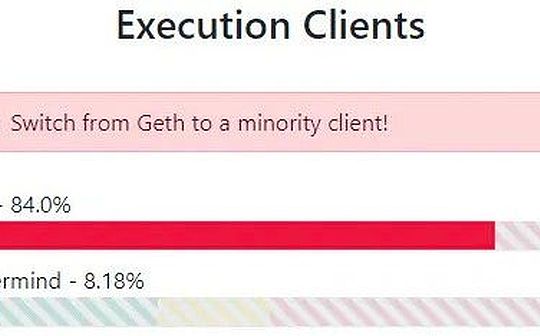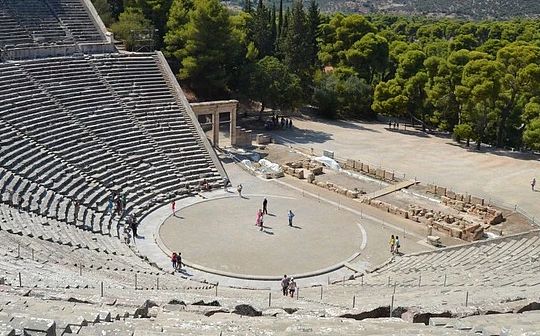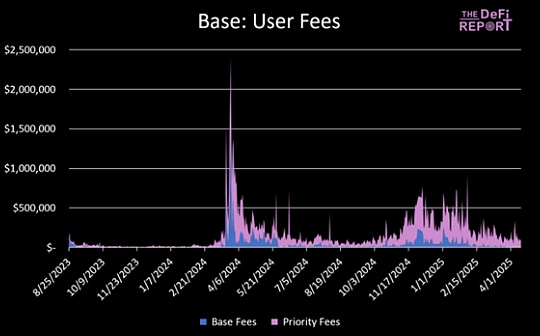
Obviously, this article that claims to use the Geth client Staking can cause the loss of assets to be too alarmist.
The author’s cases that the node is caused by SLASH’s case through the NETHERMIND client failure caused a bad condition that the Geth client that accounted for 84%.It can only be said that this is an extreme hypothesis, which is an over -interpretation of the centralized problem of Geth client.Simply talk, my thoughts:
1) The node client of Ethereum contains clients such as Geth, Network, Besu, Ericon, Reth and other clients.These execution clients are only a kind of terminal configuration selection of the development of the outlet right, and the consensus of the chain, especially the right of outlet, which is not directly related.
The only difference is that some developers may choose small clients such as Nethermind from factors such as familiarity or cost, and some developers will choose Geth with the current.No matter what kind of client developers use, the probability of the POS outlet mechanism is only related to the pledged ETH, but the Geth client covers high coverage, giving people intuitively feel that most of the outbound rights are getH.Most nodes use Geth and the amount of ETH pledged on it is large to produce logical associations;
2) As for why the Geth client accounts for 84%to become the mainstream client, it is the result of its excellent performance, strong compatibility, rich function, mature and stable results.A positive cycle: good performance -developer active -BUG faster — stable and easy -to -use — developers are more active -the greater the proportion of GETH.Although the Ethereum Foundation has also increased the proportion of other clients through continuous Grant, the result is not available, the consensus of the Geth client is getting stronger and stronger;
Following the logic of the author of the article, because the Geth client accounts for a large proportion, once the GETH problem occurs, Ethereum will be unstable, which will cause huge SLASH damage to Staking, but a pseudo -proposition.Because if it is not easy to use by the Geth client, it will not be the largest proportion. Since the proportion is a great result, how much is the probability of getting a problem with Geth?Even if this assumption is established, Ethereum is not as simple as the node Slash, and it may be involved in the hard fork of the chain;
3) The concept of AVS (Activity Validator Set) in Staking and RestAKing, which makes nodes involved in Staking to ensure the stability of the communication connection, software stability and bug fixing rate, effective outlets and verification processes.
This means that nodes involved in Staking and RestAKing will tend to choose the Geth client, and nodes in the Staking AVS set want to continue to participate in RestAKing to improve the terminal load level to improve performance.Therefore, Stacking and RestAKing will only cause competition at the client level to be more rolled, which means that the proportion of Geth clients may be further enlarged.
Therefore, from the large proportion of Geth client, the views of the potential risks of Staking and RestAking are obviously untenable.
The centralization problem of Geth client is indeed a problem, especially in the context of decentralized world modeling, the proportion of large proportion will always cause people to worry about it, but the client diversity problem.Optimization, this has no direct relationship with the explosion of Staking and RestAKing. If it is not to involve, it can only be said that the prevalence of Staking and RESTAKING may exacerbate the further centralization of the getH client.However, in this way, the risk of getting the centralized issue of Geth client is a bit worried.
Note: To weigh the initiative of Geth client centralization and the potential risk of Staking, in the hands of large nodes such as LIDO, if lido consciously increases the diversity of client nodes and sponsor a variety of client developers, the problem will be correspondingly correspondingimprove.








